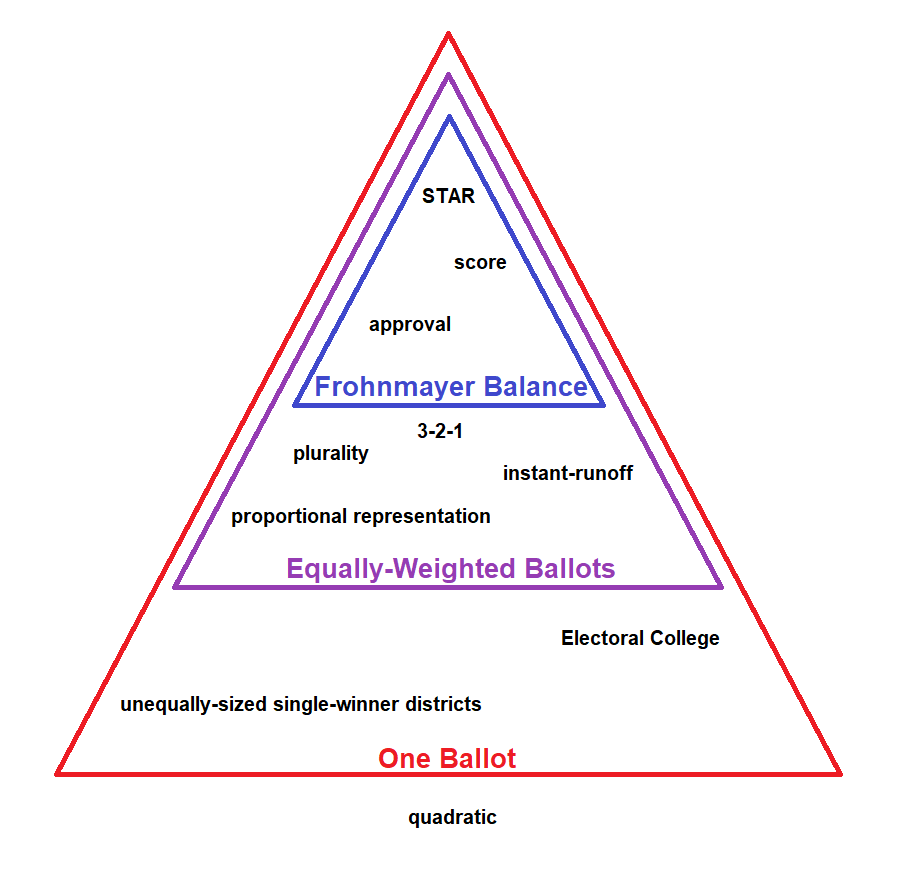This blog post has been adapted from a series of posts written for r/SimDemocracy. If you haven’t read the previous entry, please do so.
We’ve seen that closed party-list gives more representative outcomes than non-proportional methods like bloc score. However, it also failed to give voters a say in which candidates from a given party would be elected. In the previous post’s example election, this didn’t matter since the voters didn’t have opinions on the individual candidates anyway. But what happens when they do have such opinions, as is the case in real elections?
If the parties all share their voters’ preferences, then this isn’t a problem since the party can just choose the candidates the voters want. But if party insiders prefer a different set of candidates, then the voters could feel cheated out of their say in which candidates get elected. Needless to say, this should not happen in a legitimate election.
Read more
This blog post has been adapted from a series of posts written for r/SimDemocracy.
Sequential proportional score voting (SPSV) is a multi-winner voting method and a form of proportional representation. Like score voting, it uses rated ballots, and it is party-agnostic, meaning it does not take into account which parties the candidates are from. Currently, the only known instance of this method being used is the subreddit r/SimDemocracy, which uses it to elect its legislature.
Before SimDemocracy used SPSV, it used a method known as bloc score. This method was simpler to understand, but it had major issues when it came to electing a senate that represents the voters. This occurred because it was not a proportional method.
Read more
The National Popular Vote Interstate Compact (NPVIC) aims to subvert the Electoral College and elect the president of the U.S. by popular vote. It would accomplish this by having the states that signed on give their electoral votes to whichever candidate won the popular vote. However, the way it defines the popular vote assumes that all states will use single-choice plurality voting in their presidential elections. This is a problem, because Maine has switched its presidential elections to use single-winner ranked choice voting (RCV-1), also known as instant runoff voting.
Read more
In a previous post, I laid out a hierarchy of three different possible meanings of one person, one vote (OPOV). The 1st level of OPOV required that each voter have exactly one ballot. The 2nd level required that each ballot have the same weight. Finally, the 3rd level required each possible ballot to be perfectly cancelled out by another possible ballot. I also created a combination Euler/pyramid diagram to demonstrate the relationship visually:

Read more
Epistemic status: fiction
Most people believe that the soul is the essence of a person. These people are wrong. The essence of a person is their consciousness, and consciousness is merely a complex and intricate set of computations occurring in the brain. The reason so many believe this myth regarding souls arises from the consequences of removing one.
The exact results vary from procedure to procedure, but what they all have in common is the destruction of the patient’s consciousness. In some cases the patient simply dies. In others they enter a permanent coma-like state. And for some procedures, the results are… best left unsaid.
The issue that all of these procedures encounter is related to the soul’s dependence on a person’s consciousness. Without a consciousness to shape it, a soul would merely be a small and unremarkable reservoir of magical energy. However, magical energy shaped directly by consciousness becomes incredibly useful.
Read more
